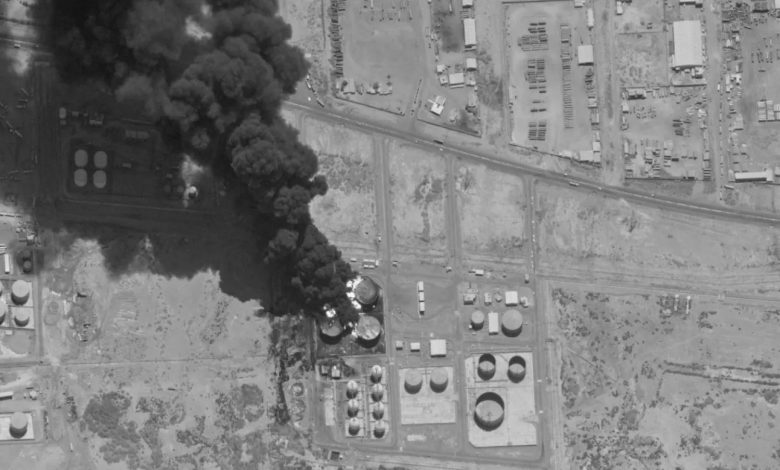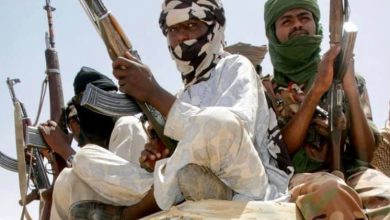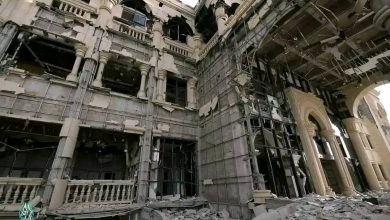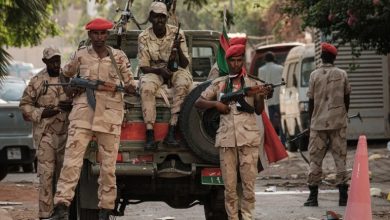The Use of Drones Marks a New Turning Point in Sudan’s War

The ongoing war in Sudan, now entering its third year, has taken a new turn as the Rapid Support Forces (RSF) have intensified drone attacks on army-controlled areas, signaling a potentially “dangerous phase,” according to analysts who spoke to Agence France-Presse and Asharq Al-Awsat.
Over the past week, RSF drones targeted areas that had previously been considered safe and far from the battlefronts that erupted in 2023.
As a result, the relative stability maintained by the army in its controlled regions is now in question, with the RSF threatening supply routes and civilian infrastructure, striking areas hundreds of kilometers from their known bases.
Sudanese analyst Kholood Khair says the drone strikes aim to “undermine the army’s ability to maintain security in its territories,” allowing the RSF to widen the scope of the war without deploying more troops.
During the two years of conflict, the RSF primarily relied on swift ground assaults that repeatedly broke through army defenses and captured key cities. But after being expelled from Khartoum, the RSF has increasingly turned to long-range weapons. In this context, Michael Jones, a researcher at the Royal United Services Institute in London, described the RSF’s recent moves as a “strategic and possibly desperate adaptation.” He told AFP that the loss of Khartoum was both a strategic and symbolic setback for the RSF.
According to Sudan analyst Hamid Khalafallah, the RSF now seeks to send a message “that the war is ongoing” by targeting vital sites.
The war has divided Sudan into spheres of influence between former allies: army commander Abdel Fattah al-Burhan, who controls central, eastern, and northern regions along with most of the capital, and RSF leader Mohamed Hamdan Dagalo (Hemedti), who holds most of the Darfur region and parts of the south.
Terror and Distraction
Despite its new strategy, Khalafallah doubts that the RSF can retake Khartoum or reach Port Sudan, the government’s temporary capital in the east, through ground operations, due to the army’s qualitative advances—especially in air power.
Speaking to AFP, Khalafallah said the drone attacks are aimed solely at “spreading terror and destabilizing” army-controlled areas. Jones adds that drones and light weapons allow the RSF to “reach areas it previously failed to penetrate.”
Muhannad Al-Noor, a Sudan analyst at the Tahrir Institute for Middle East Policy, said the RSF’s primary goal is to distract and occupy the army to prevent it from advancing into Darfur or Kordofan. He explains that it is easier for the RSF to launch quick attacks and then retreat, rather than holding ground that requires constant defense.
Types of Drones
According to a retired army general, RSF fighters are using two types of drones: light, improvised suicide drones carrying explosives that detonate on impact, and advanced long-range drones capable of carrying guided missiles.
The RSF is reportedly in possession of Chinese-made CH-95 drones, GB-50A guided bombs, and AH-4 shells, based on image analysis of remnants found after attacks in Khartoum and Darfur.
Major General Moatasem Abdelqader Al-Hassan, a security and strategy advisor at the Higher Academy for Strategic and Security Studies, told Asharq Al-Awsat that there are two categories of drones: strategic drones capable of flying over 2,000 km, and suicide drones that crash into targets. He explained that strategic Chinese drones are typically only available to state militaries, while commercial drones can be modified and armed with explosives.
Why Drones Succeed
A retired Sudanese army officer, speaking anonymously, said drones are among the most effective modern weapons and have played a significant role in the current conflict.
Speaking to Asharq Al-Awsat, he said advanced drones—referred to as “strategic drones”—could shift the balance of power in favor of whoever obtains them. He highlighted their destructive capability and accuracy in hitting fixed and moving targets.
He noted that the success of drones lies in their element of surprise and their ability to jam and penetrate even the most advanced air defense systems, similar to what has occurred in the war between Russia and Ukraine, where both sides have used drones with great precision.
A Draining War
The long distance between the RSF’s stronghold in Darfur and the government base in Port Sudan—approximately 1,500 km—necessitates the use of long-range drones such as the Chinese Wing Loong II or the Turkish Bayraktar TB2, favored by the Sudanese army, according to Amnesty International.
Both sides are now engaged in an “extremely costly arms race,” each aiming to destroy the other’s drone fleets, says Khair.
After two grueling years of war, the RSF has another reason to rely on drones: in addition to destabilizing army-held regions, drones are less expensive than deploying fighters. Khair told AFP that drones allow the RSF to “spare its fighters from direct combat or face-to-face clashes with the army.” She points to reports suggesting that the RSF’s recruitment capability has declined since the war’s early days, when looting opportunities were a major incentive. Now, she says, “there’s little left to loot in central Sudan.”
However, other observers disagree. They argue the RSF has ample funds from illegal gold smuggling, controlling key mining regions like Jebel Amer in Darfur. One analyst claims the RSF’s sudden withdrawals from several cities in Al-Jazirah and Khartoum are not signs of weakness, but part of a new strategy after acquiring advanced drones.
Both sides in the war face accusations of civilian abuses and infrastructure destruction. However, the RSF has been specifically accused of looting, sexual violence, and genocide. The war, now in its third year, has killed tens of thousands, displaced 13 million people, and created one of the worst humanitarian crises in modern history, according to the United Nations.



